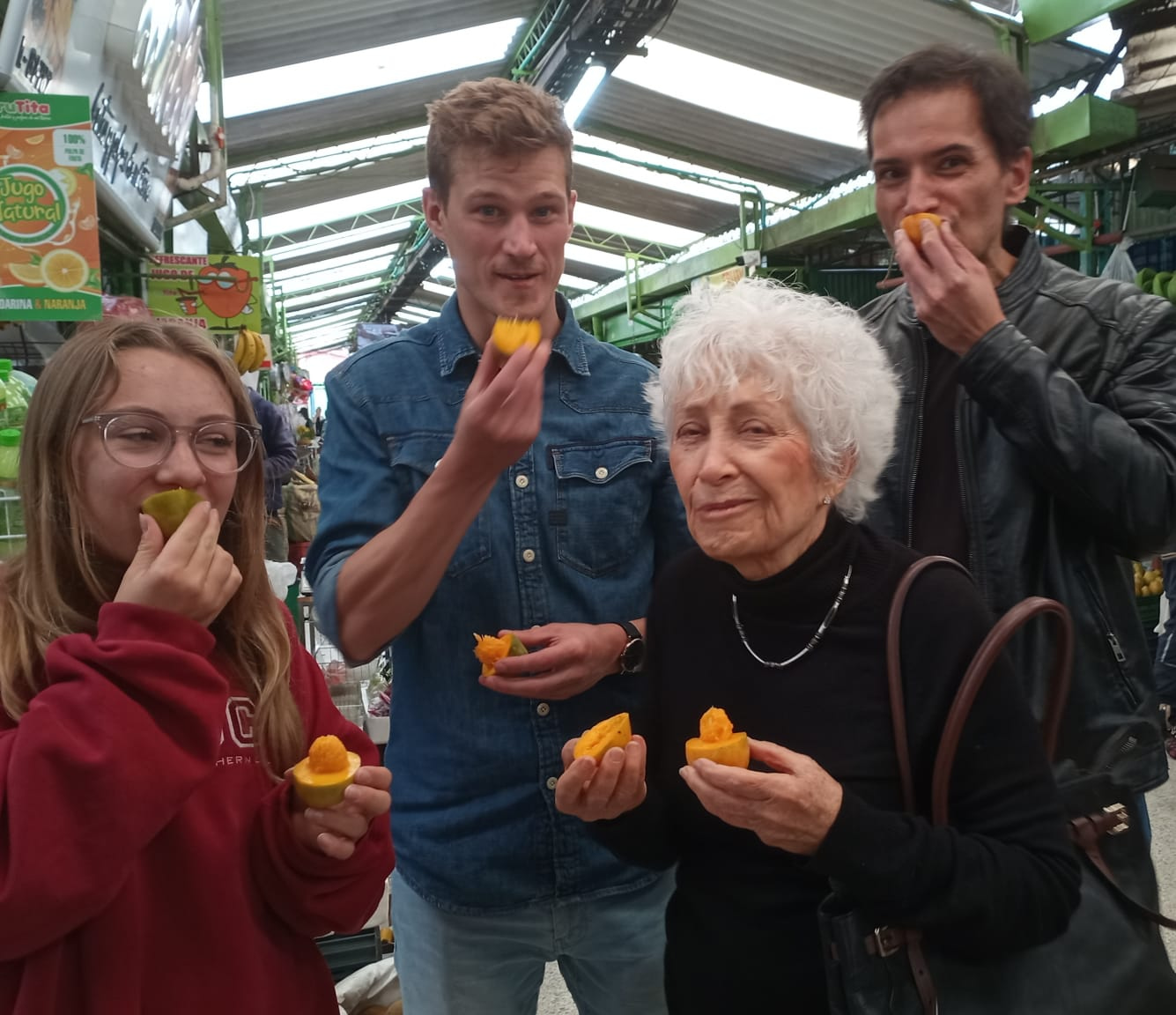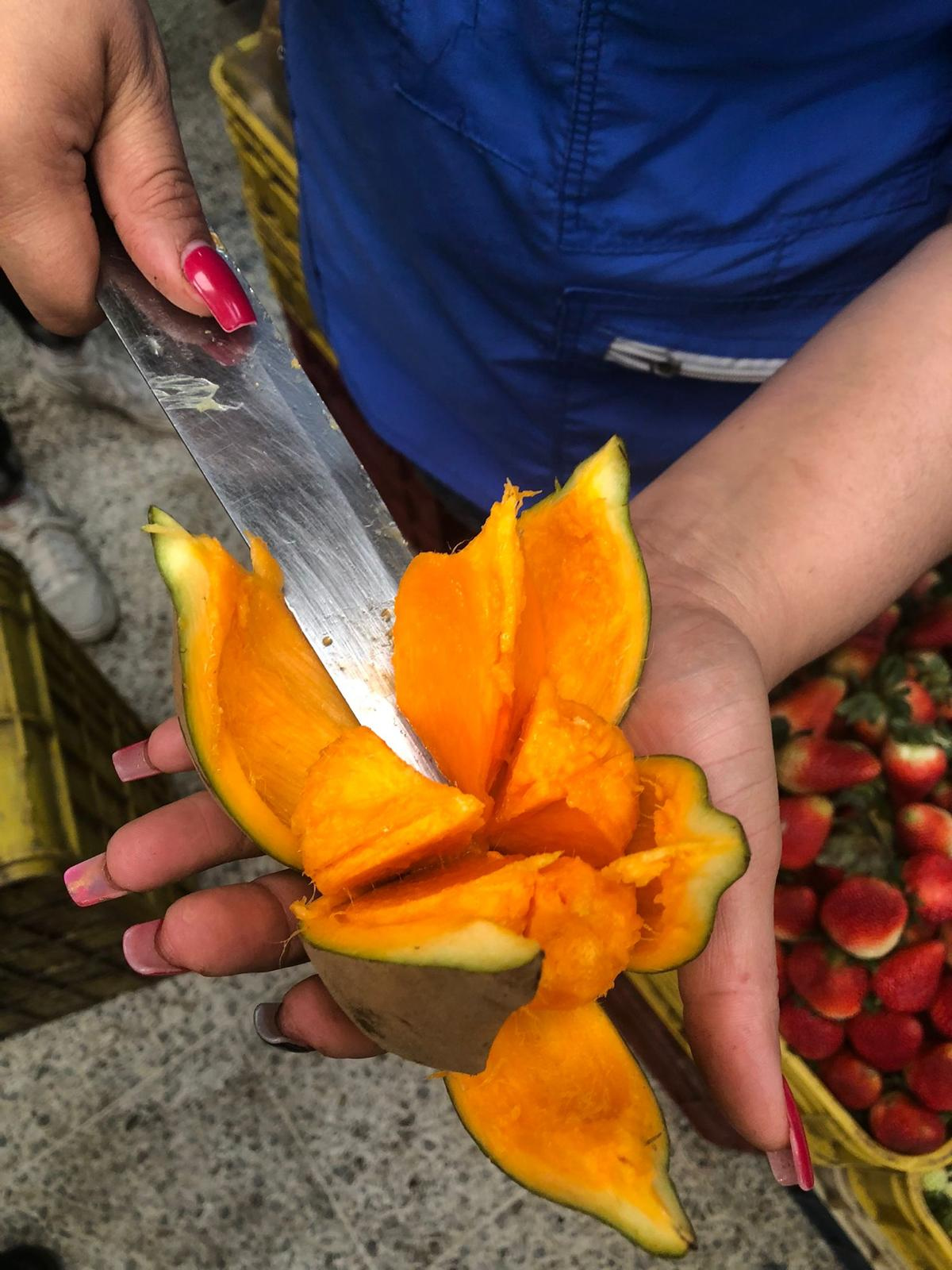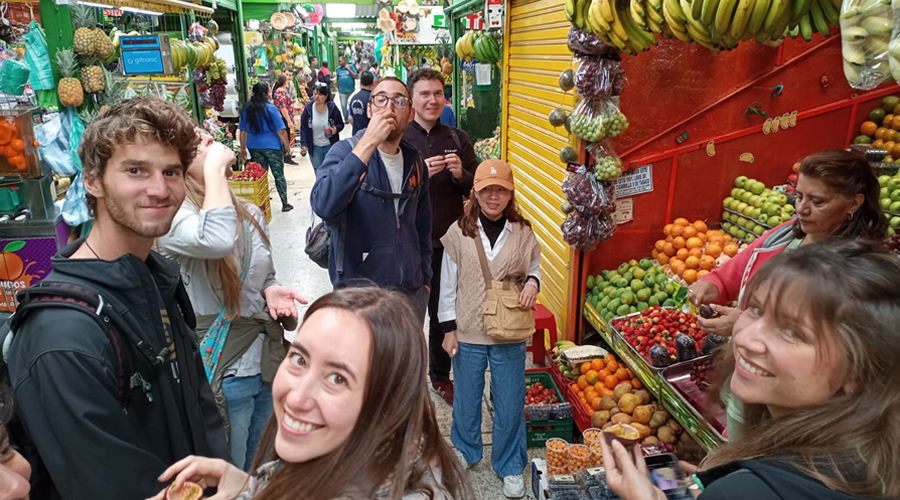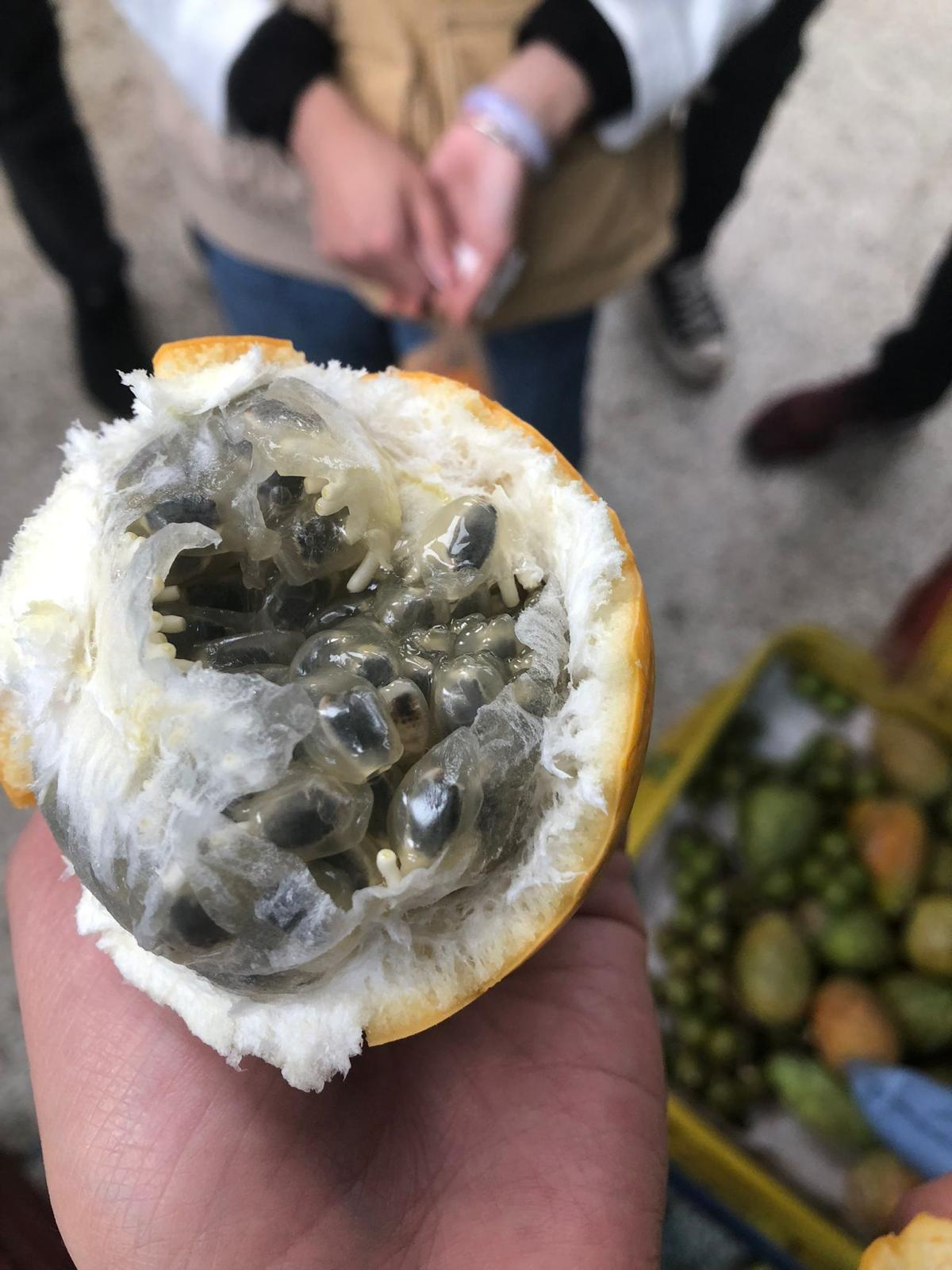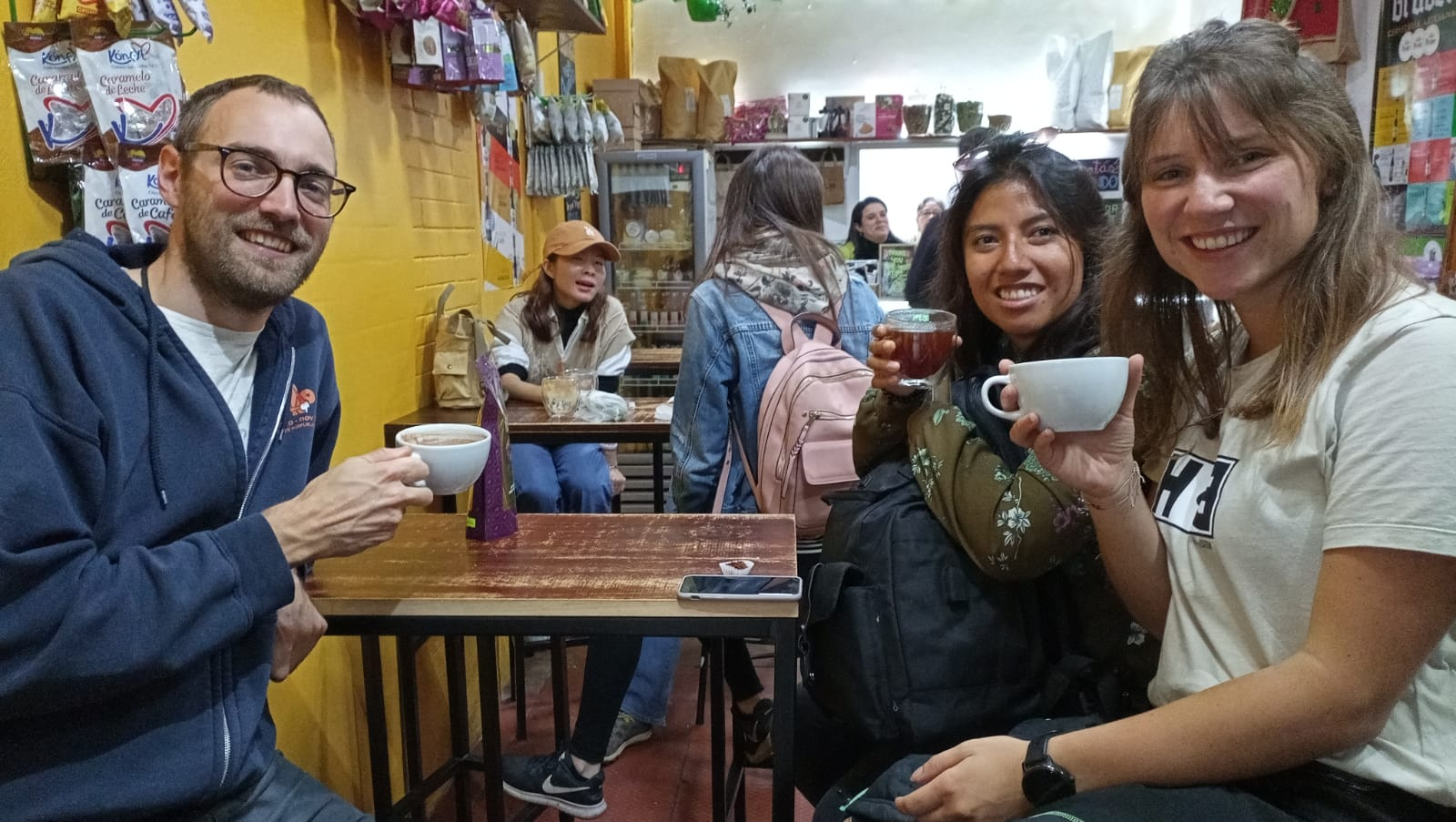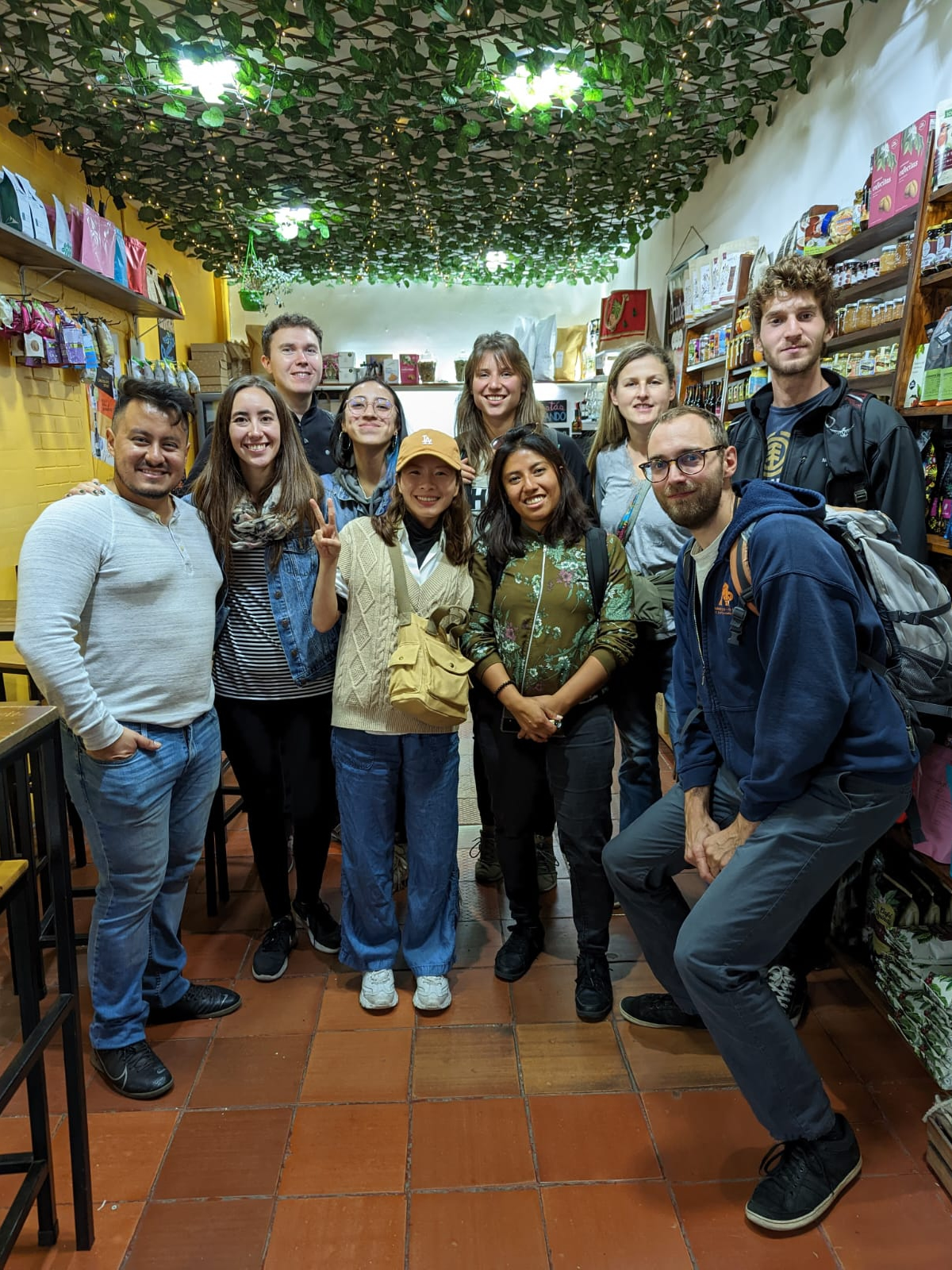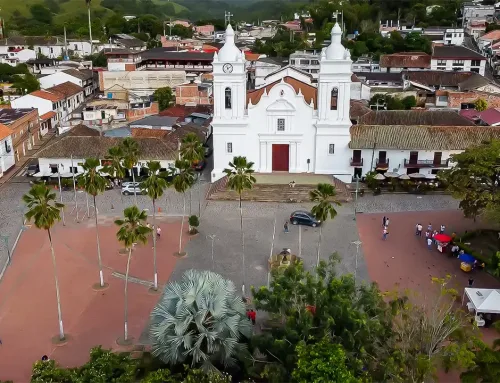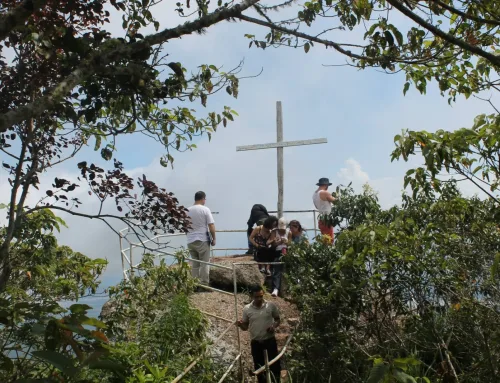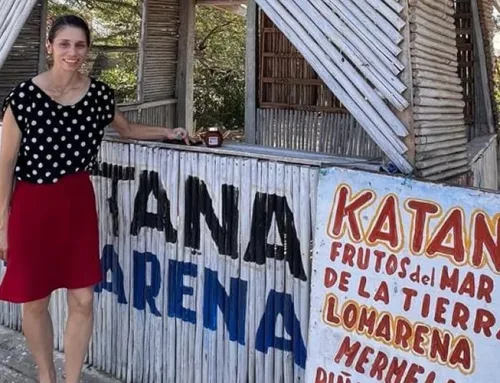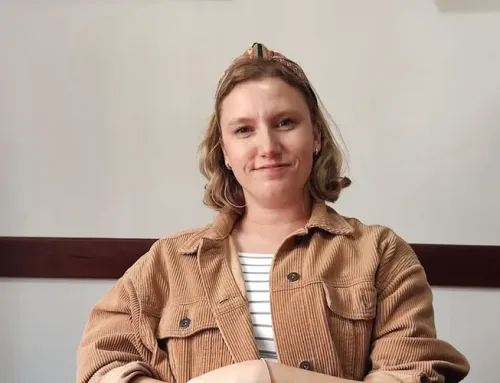In Bogotá we have one of the largest market centers in Latin America, its name is Paloquemao. Located in a popular and central sector of the city, it is an urban point known by all Bogota citizens as the place where everything related to cooking is obtained: fruits, vegetables, meats, spices and an incredible amount of flowers and plants. , with a national variety and also for export.
In our city, it is common to have small stores in each neighborhood, from the south and the north, where we can buy the ingredients for our daily meals; All those small neighborhood stores that indirectly contribute to the construction of the neighborhood community, as well as the mania of Bogotans to call each person we see a “neighbor”, find their supply center in Paloquemao.
We visit with our students from Bogota this gastronomic heart to see the diversity of Colombian flowers and try many of the typical and unique fruits of our country. We first tried the sugar mango, grown in 16 different regions of the country, especially in Tolima. It is a small and very sweet mango that all our students love, but that always forces us to wash our hands after tasting it. She was the favorite of John from Australia and Warren from Canada, who bought £2 to take home with him.
Colombia is the world's leading producer of the 'granadilla', grown in the Andes mountains, it is known as the sweet passion fruit, which has a shell that looks like the skin of an egg because it needs to be broken to find the seeds inside. small seeds covered with sweet fruit. With our students we "discovered" a new way of eating it, using its shell as a spoon to be able to share it; she was the favorite of Claudia, from the United States and Marlies from Austria.
Then we bought a box of 'uchuvas', one of the most produced fruits in all of South America, mainly in Peru, Colombia and Ecuador. Sam, from England, classified this fruit as a mini-tomato: very sweet orange. It was his favorite, as was Noam's from Israel, especially because of the curious flower that covers the fruit before it is harvested and gives it a smooth texture when tasted.
We also tried the 'mamoncillo', a fruit with a maximum diameter of two centimeters that grows on trees about 30 meters high in the Colombian jungle. It is a fruit with a neutral color inside a hard green shell; when they open it, most of the students say that it is 'lychee', as it is visually very familiar, but the taste is completely different: “like a wine, dry and wet”, said Annie, from Canada, and Gan, from China, who found incredibly similar to 'rambután', an Asian fruit that we know in Colombia as the Chinese mamoncillo.
Finally, we tried the 'zapote', a fruit very similar to the normal mango but with a strong orange color inside, similar to the color of carrots. It has a very strong flavor, between sweet and bitter that makes it a unique fruit, in addition to having a very dark green skin that hides its neon orange; our shopkeeper friend from the plaza, Yency, opened it in different slices to share it. For me, the most controversial fruit in Colombia, because you only have two options: either you love it or you hate it. Our students chose the first option!
Written by Professor Daniela Noy– Nueva Lengua Bogota,
All the articles in this blog have been written by the teachers of our school and by students from different countries who traveled to Colombia to learn Spanish.
“You travel too and study Spanish in NUEVA LENGUA"
Follow us on our social networks:
As we continue to try many other fruits such as gulupa, pitaya, sugar apple, lulo, blackberry and even the fig, fruit of the cactus, our students wrote their names, practiced our famous questions: how much does that cost? And what is this called? They compared the fruits with the ones they find in their countries and learned to ask for “ñapa”, a little extra gift that we usually ask for in Colombia after making a purchase.
Finally, we end our day, some having a coffee and others chocolate based on pure cocoa, or chucula, a product with cocoa that presents an alternative proposal for a drink, mixing it with different seeds and natural products from our beautiful region in Boyacá, a completely Colombian product that we love in Colombian homes.
We conclude then, on our way back to school, that the important thing about knowing a culture "from the palate" is that you feed your body with the sensations that build the collective culture of a community, as well as the experience of shopping with the locals. and participating in their daily interactions is very important to learn Spanish in an immersion space. We invite you to our diverse Colombia!
RELATED VIDEOS
MEDELLÍN - GUADUAS

